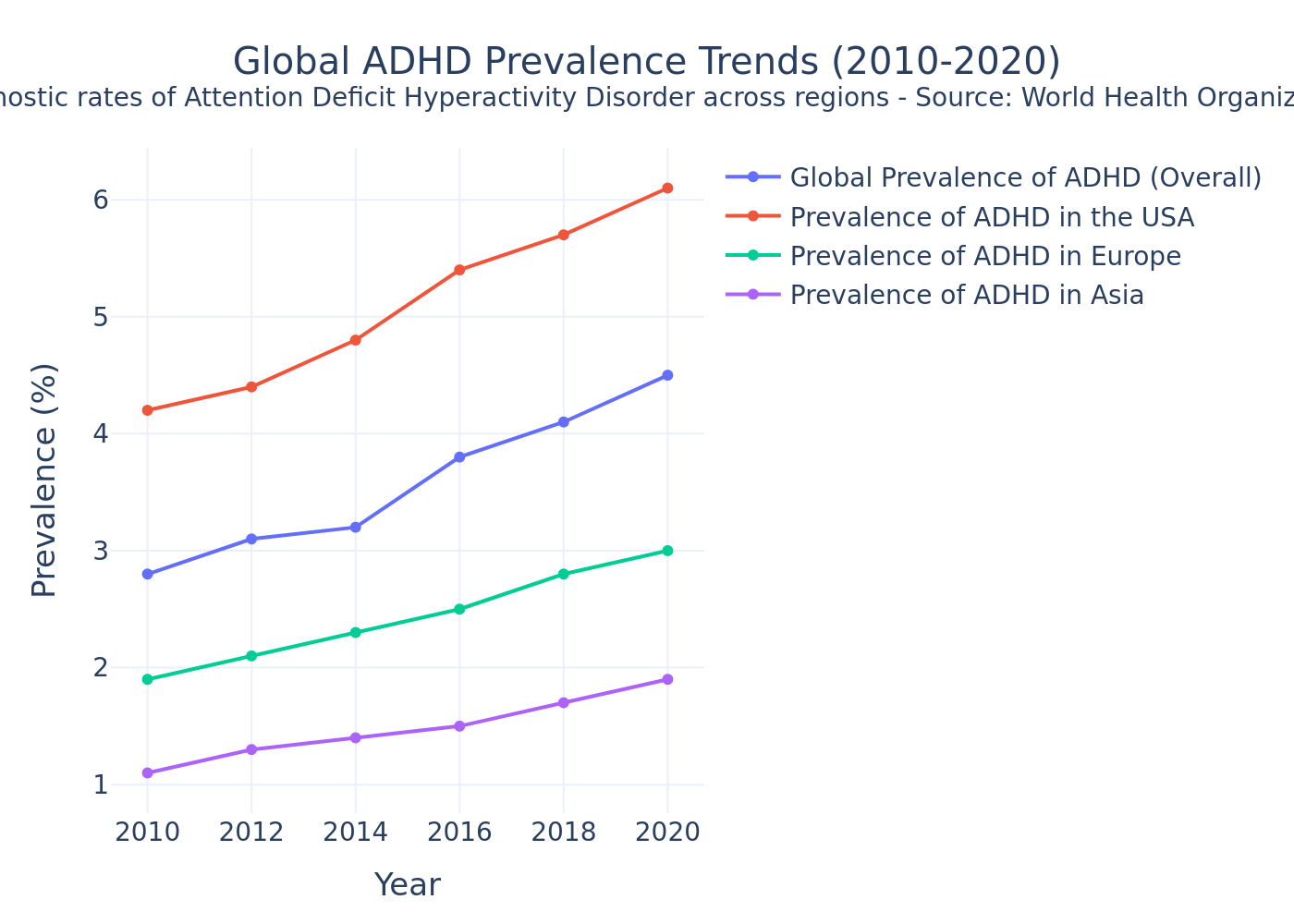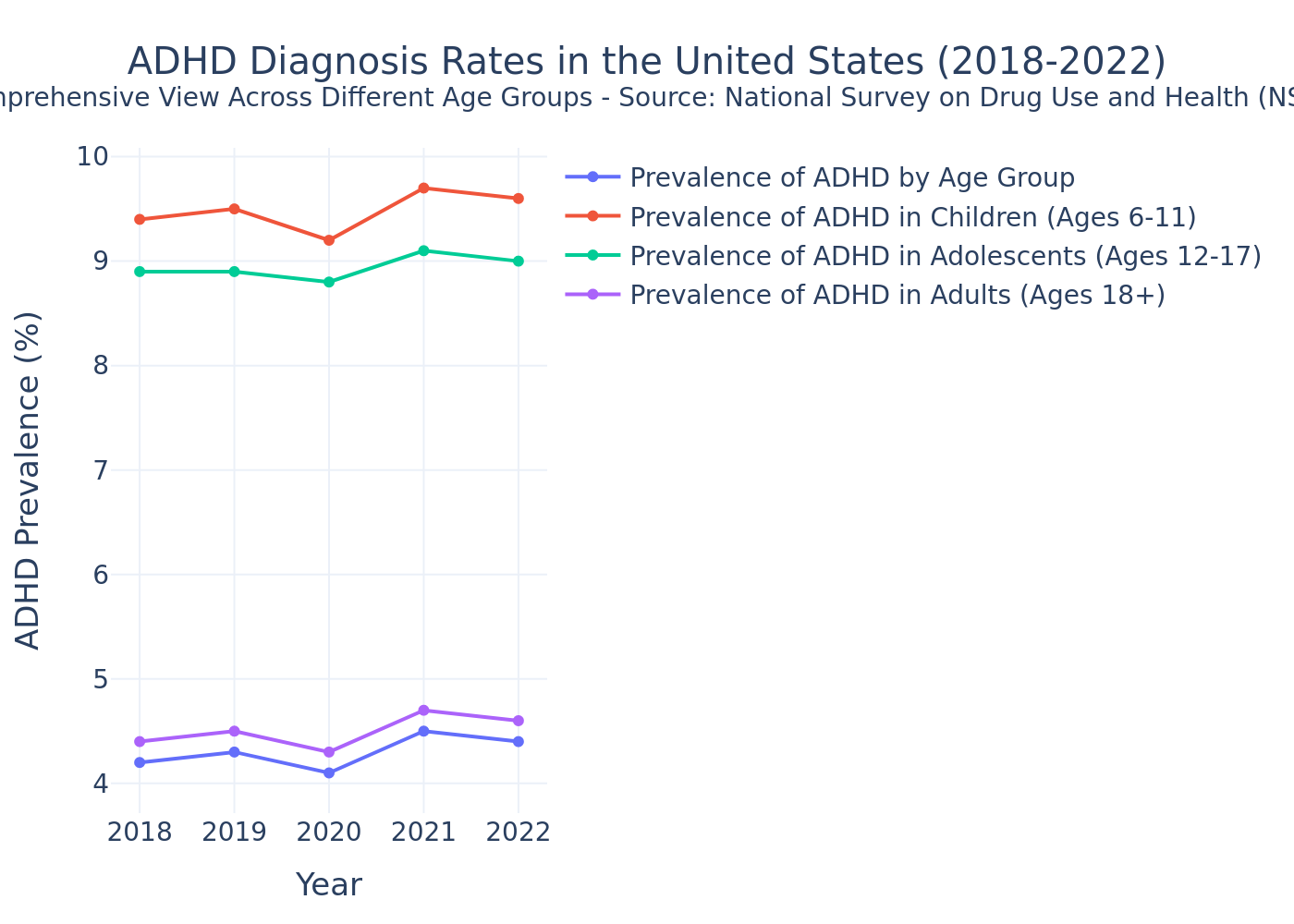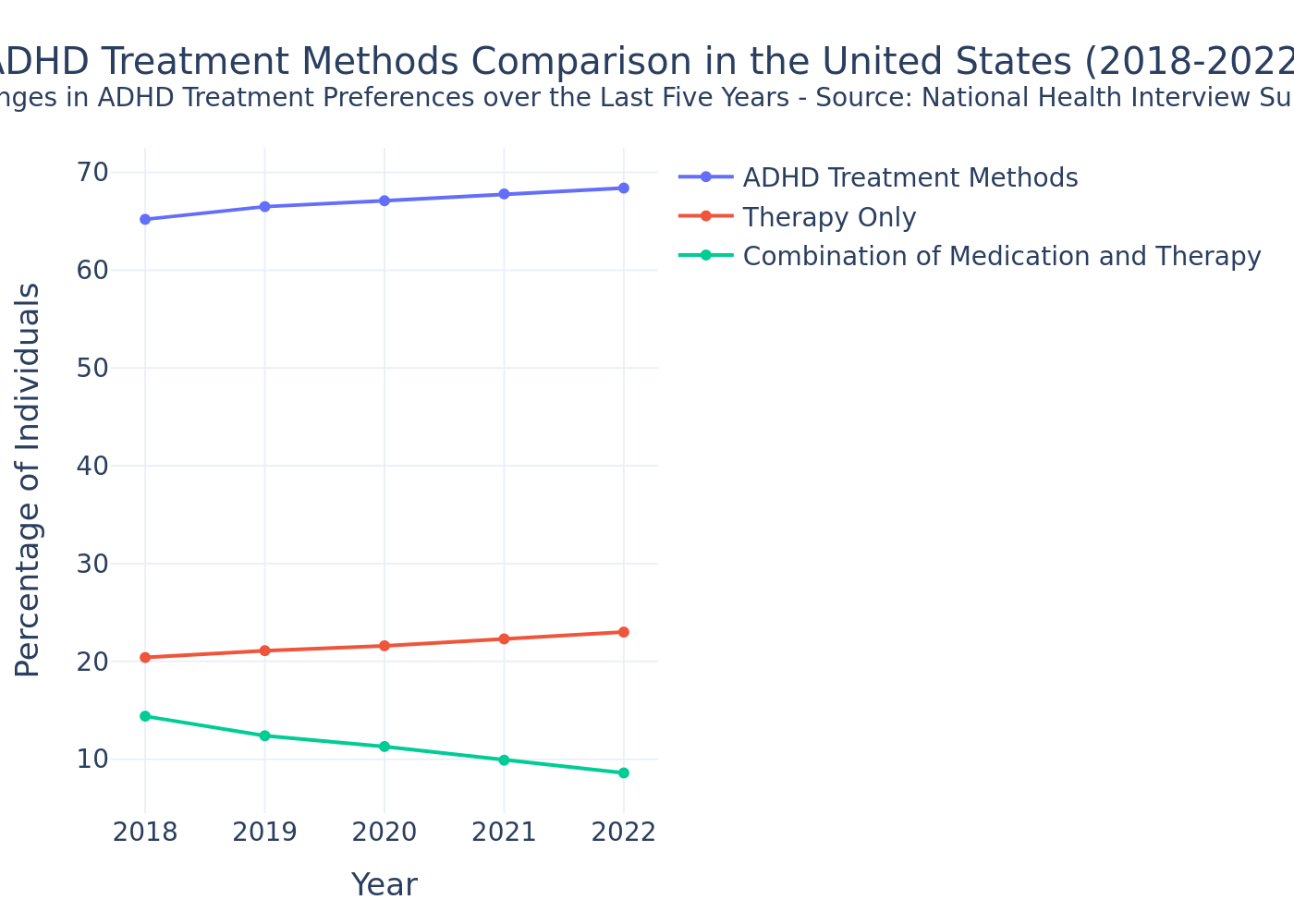Understanding ADHD: Global and U.S. Trends, Diagnosis, and Treatment
Exploring Attention Deficit Hyperactivity Disorder Across the Globe and Within the U.S.
Attention Deficit Hyperactivity Disorder (ADHD) is a common neurodevelopmental disorder that affects both children and adults globally. Recent statistics reveal that the global prevalence of ADHD has consistently increased over the past decade, with higher rates observed in the United States compared to other regions. This blog post explores the prevalence of ADHD both worldwide and within the U.S., along with an examination of the current diagnosis trends and treatment methods in practice today.
Global Prevalence Trends of ADHD
Over the past decade, the global prevalence of ADHD has been on a steady rise. Data from the World Health Organization highlights an increase in diagnosis rates from 2.8% in 2010 to 4.5% in 2020 [source link]. This rise can be attributed to better recognition of the disorder and increased access to health care services. The USA shows notably higher rates compared to other regions, starting from 4.2% in 2010 and reaching 6.1% by 2020.
In Europe, the prevalence increased modestly from 1.9% in 2010 to 3.0% in 2020. Meanwhile, Asia's prevalence climbed from 1.1% to 1.9% within the same period. The rising numbers across these continents signify a growing awareness and acceptance to seek medical advice for ADHD worldwide. These increases reflect not only medical advancements but also changing societal attitudes towards mental health.

ADHD in the United States: A Deeper Look
In the United States, the prevalence of ADHD has shown some particular trends when broken down by age. Between 2018 and 2022, the prevalence remained relatively stable, with slight year-to-year variations. For instance, children aged 6-11 have consistently shown the highest rates, fluctuating around 9.4% to 9.7% [source link].
The adolescent group, aged 12-17, showed a prevalence near 8.9% to 9.1%, and adults 18+ hovered around 4.4% to 4.7%. This data suggests that although ADHD is prevalent across all age groups, children exhibit the highest diagnoses, possibly due to more systematic screening in schools and pediatric visits.

Diagnosis Trends Across Different Age Groups
Securing an accurate diagnosis for ADHD involves a multi-step process of gathering information from multiple sources, such as family, teachers, and medical professionals. This holistic approach helps rule out other conditions that might mimic ADHD, such as depression or anxiety. This complexity in diagnosis has led to variances in diagnosis trends, especially across different age groups.
The diagnostic trends indicate that younger children are more likely to be diagnosed due to observable behavioral challenges in school settings. However, the growing recognition of adult ADHD has shown a slight increase in diagnoses among adults, reflecting a broader understanding that ADHD does not just affect children.
Treatment Methods for ADHD in the U.S.
The treatment methods for ADHD in the United States have also witnessed substantial variations over the years. Data illustrates an increase in individuals using medication as the primary treatment method, growing from 65.2% in 2018 to 68.4% in 2022 [source link]. Despite controversies surrounding the use of medication in treating ADHD, it remains a preferred choice due to its effectiveness in managing symptoms.
Therapy-only treatments have seen a consistent increase as well, with a rise from 20.4% in 2018 to 23.0% in 2022. Interestingly, the combination of both medication and therapy shows a decline from 14.4% to 8.6% over the same period, suggesting a growing tendency to either follow one treatment path or the other rather than dual approach.

Why Correct Diagnosis is Critical
Diagnosing ADHD correctly is vital not only to inform treatment decisions but also to manage expectations and improve outcomes. Misdiagnosis can lead to improper treatment approaches that might not address the root problems. Correct diagnosis ensures that individuals receive the appropriate type of treatment, and helps in finding effective coping strategies for managing the condition.
With ADHD’s complex nature as a mix of hyperactive, inattentive, and impulsive symptoms, a personalized evaluation is key. It involves identifying which aspects of ADHD are most pronounced in the individual, thus tailoring the treatment to those needs specifically.
Personal Stories and Therapy Success
Across the United States, stories of individuals and families successfully managing ADHD are increasingly common. Highlighting personal stories not only raises awareness but also reduces stigma associated with the disorder. Many have found significant improvement through therapies such as Cognitive Behavioral Therapy (CBT) or behavioral interventions, which help in re-framing thought processes and behaviors.
Parents play a vital role, especially in cases of childhood ADHD. Their involvement in therapy and treatment plans, understanding triggers, and modifying environments at home and school can greatly enhance the outcomes. These success stories underscore the importance of a supportive network and a comprehensive treatment plan that involves both medical and psychological support.
Conclusion: Navigating the Path Forward
As we gain deeper insights into ADHD, understanding its global and national trends allows us to respond more effectively to those affected. The rising prevalence indicates not just increased occurrence, but a better capture of the disorder through modern diagnostic criteria. With the U.S. showing higher rates, continuous dedication towards improved strategies, both in prevention and treatment, remains crucial. Balancing medication and therapy, and choosing tailored treatments that incorporate personal experiences and scientific evidence, will remain key as we navigate the path forward in tackling ADHD effectively.
